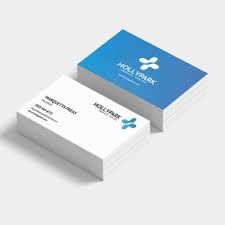In 2025, business cards remain a powerful networking tool, even in our increasingly digital world. A well-designed card can leave a lasting impression, helping you stand out in a competitive market. However, printing high-quality business cards doesn’t have to break the bank. With the right strategies, you can create professional, eye-catching cards while staying within your budget.

This guide covers cost-effective printing methods, smart design choices, and the latest trends to help you print business cards affordably in 2025.
1. Choose the Right Printing Method
The printing method you select significantly impacts cost. Here are the most budget-friendly options in 2025:
A. Digital Printing
- Best for: Small to medium print runs (50–500 cards).
- Pros: Low setup costs, quick turnaround, and customizable designs.
- Cons: Slightly less crisp than offset printing for very fine details.
Digital printing remains the go-to for budget-conscious professionals. Many online printers (like Vistaprint, GotPrint, and Moo) offer discounts on bulk orders.
B. Offset Printing
- Best for: Large quantities (500+ cards).
- Pros: Lower per-unit cost for big orders, high-quality finish.
- Cons: Higher upfront setup fees, longer production time.
If you need thousands of cards, offset printing is cost-effective in the long run.
C. Print-at-Home Business Cards
- Best for: Ultra-small batches (10–50 cards).
- Pros: Instant printing, full design control.
- Cons: Lower quality unless you invest in premium paper and ink.
With high-quality cardstock and an inkjet/laser printer, you can DIY business cards. Use pre-cut blank business card sheets for a professional look.
D. Eco-Friendly Printing
- Best for: Sustainable branding.
- Pros: Appeals to environmentally conscious clients.
- Cons: Slightly higher cost for recycled/specialty materials.
In 2025, many budget printers offer recycled paper and soy-based inks at competitive prices.
2. Optimize Your Design for Affordability
A well-planned design reduces printing costs. Follow these tips:
A. Stick to Standard Sizes
- The most affordable size is 5″ x 2″ (standard US business card).
- Odd shapes (square, rounded corners) or oversized cards cost more.
B. Limit Colors
- Full-color printing is standard, but spot colors (Pantone) increase costs.
- A two-color or grayscale design can look sleek and save money.
C. Avoid Excessive Finishes
- Foil stamping, embossing, and UV coatings add expense.
- A matte or gloss finish is affordable and still looks professional.
D. Use Free or Low-Cost Design Tools
Instead of hiring a designer, use:
- Canva (free templates)
- Adobe Express (AI-assisted designs)
- Figma (for advanced customization)
Many online printers also offer drag-and-drop design tools.
3. Order Smart: Bulk Discounts & Print-on-Demand
A. Buy in Bulk
- The more you print, the lower the per-card cost.
- If you network frequently, ordering 500–1,000 cards at once is cost-efficient.
B. Use Print-on-Demand Services
- Companies like Printful and Overnight Prints allow small batches with no storage hassle.
- Ideal for freelancers who update details frequently.
C. Look for Promo Codes & Seasonal Discounts
- Many online printers offer first-time buyer discounts (e.g., Vistaprint’s 50% off deals).
- Black Friday, Cyber Monday, and New Year sales are great for bulk orders.
4. Choose Budget-Friendly Materials Wisely
A. Paper Weight & Thickness
- Standard (14–16 pt): Most affordable, still professional.
- Premium (17–32 pt): Thicker, but pricier.
B. Paper Type
- Matte: No glare, fingerprint-resistant.
- Gloss: Shiny, vibrant colors.
- Uncoated: Natural feel, great for handwriting notes.
C. Avoid Unnecessary Extras
- Double-sided printing is usually worth it, but edge coloring, die-cutting, or metallic inks add cost.
5. Leverage Digital Enhancements (2025 Trends)
Since QR codes and NFC chips are now standard, use them to make your card more interactive without extra printing costs:
A. QR Codes
- Link to your portfolio, LinkedIn, or a contact form.
- Free generators: QRCode Monkey, Canva’s built-in tool.
B. NFC-Enabled Cards
- Tap-to-connect technology is becoming affordable.
- Services like Popl and Linq offer NFC cards at competitive rates.
C. Augmented Reality (AR) Business Cards
- Some companies embed AR experiences (e.g., a 3D product demo).
- Still niche but dropping in price.
6. DIY Business Card Printing Tips
If printing at home:
✔ Use 120–300 gsm cardstock for durability.
✔ Align designs properly using template guides.
✔ Invest in a corner rounder for a polished look.
7. Where to Order Cheap Business Cards in 2025
Here are the best budget-friendly printers:
- Vistaprint (best for beginners, frequent discounts)
- GotPrint (low-cost bulk orders)
- Moo (premium feel at mid-range prices)
- UPrinting (good for custom sizes)
- Overnight Prints (fast turnaround)
Final Thoughts
Printing business cards on a budget in 2025 is easier than ever with digital printing, smart design choices, and online discounts. By selecting the right materials, optimizing your design, and ordering strategically, you can create professional cards without overspending.
Whether you choose an online printer, offset bulk order, or DIY approach, the key is balancing cost and quality to make a lasting impression.
Pro Tip: Always order a test batch before committing to a large print run to ensure quality meets your expectations.
Now, go forth and network—your next big connection could be just a business card away! 🚀



